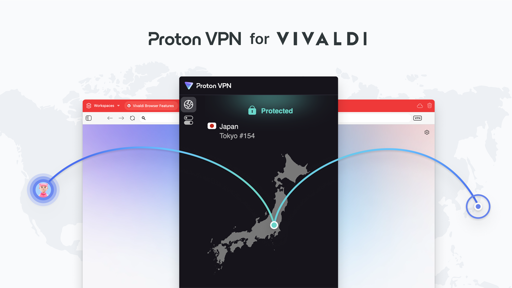SayCyberOnceMore
- 5 Posts
- 371 Comments

 5·11 days ago
5·11 days agoJust chiming in with my suggestion - if the company’s location also benefits you:
A private UK company which also hosts VPS in US and NL
I’ve moved my domain here and used their DNS API to remove the need to pay for a couple of DynDNS companys.
0 downtime over… dunno… 5 years?

 2·12 days ago
2·12 days agoWow, just looked that one up on Wikipedia… just… wow

 2·12 days ago
2·12 days agoLinux and BSD have the same heritage, but took slighlty different paths… so they’re cousins.
Look it up on Wikipedia, etc… it’s an interesting bit of history.
I’ve tried a few desktop environments and ended back with XFCE… all the whizzy snazzy stuff breaks over time, or get’s "up"graded to something I don’t like… XFCE just works…
This is the way.
The only way to find the right distro is to try them out, on the end device, with the end user.

 7·16 days ago
7·16 days ago~/Stuff(1) as well?

 3·17 days ago
3·17 days agoFor a NAS, like, storage on the network, keep it as simple and as reliable as possible, so avoid Ubuntu and go to the core underlying OS: Debian.
Then just build up the functionality you need, is SMB, NFS, etc.
Personally, I went from OMV to a home built NAS, but went with Arch as that’s what I use elsewhere (btw), so am comfortable with it, but it’s bleeding edge which isn’t always the best if some functionality changes when you’re not ready for it.
If you’re going for a server running lots of containers, etc, then find whatever the container handler (docker?) is best on… I just put everything on bare metal, so can’t advise what’s best for containers… probably Debian again…
But, keep it simple.

 6·18 days ago
6·18 days agoI came from Nextcloud to syncthing, you’re in the right place.
… it’s a policy driven hell

 4·22 days ago
4·22 days agoYeah, Point 1 here is exactly why I moved from Ubuntu to Arch ~10 years ago.
I was trying to get something working and found that the bug / feature had been fixed ~1 year earlier, but that version wasn’t in the repos… I couldn’t move forwards.
With Arch, all is well. And, I’m either reporting new bugs and helping to get things fixed, or I’m updating the wiki with any changes I notice.

 4·26 days ago
4·26 days agoTo answer your first bit:
I went owncloud --> nextcloud --> syncthing + radicale.
Not looked back.
I run everything through a proxy in my home-built pfsense box.

 5·26 days ago
5·26 days agoYou’re doing fine.
After seeing someone at work burnout, I’ll offer this advice:
Find what you enjoy doing and do nothing more (today). Itch only 1 scratch at a time.
As an analogy - consider you’ve moved into a newly built house and have an empty garden. No-one would expect you to create that perfectly first time around. Esp. in 1 weekend. It needs time to grow. Some things will need cutting down, some things will need moving. Animals will crap on it.
I think you’re trying to make it perfect, first time around. Perhaps as a fear of doing it “wrong”.
There is no wrong, it’s all a learning experience, doing things good enough for now and improving / breaking things later.
Ensure you know how to backup your files (3-2-1 rule) and the rest doesn’t matter.
I’ve re-written my ansible scripts a few times, but over months and years as I’ve learned what works best for my system.
For example, I had 1 complete script for each device. I can wipe the device (get it back on the network) and rebuild with no effort…
… then I realised that most of the scripts had very similar parts to tweak SSH and other settings, so then I learned how to call scripts from within scripts, which also meant using variables (facts) to work out if this is a 32b or 64b RasPi (for example)
That probably took 3 months
But I enjoy sitting in my garden and looking at it…

 8·28 days ago
8·28 days agoLongterm MythTv user here, watching the discussions
🍿

 1·28 days ago
1·28 days agoI want to search for a blog on this now…
Not arguing with you, it’s just a choice.
The question was whether Immich had to be executed from within a container system… and it doesn’t have to.
I guess that’s true.
I’m running it outside of a container and outside a VM… as there’s no abstraction layer on top of the underlying OS. Which I guess is inside the bare metal.
So, Yep.
I’m running it bare metal on my NAS.
No problems, plus I don’t have to do extra container stuff.
I’ve not seen that option, but I use syncthing instead of the phone application to sync my photos to a specific folder on my NAS which is then an external library for Immich.
TBH, I don’t want anything deleting anything automatically.
I’ll often delete newer pictures of temporary stuff but keep older pictures of my frinds & family, so, that’s not a feature I’d see any value in. It tends to just make me lazy and build up GBs of junk photos on my NAS (and backups…)


I dont want to dump on anyone, but this is v2.4.0 and v1.0.0 was last month…
With 4 tickets…
I’m also unsure that refering to zero knowledge architecture is the correct phrase here. Instead I think it should be zero trust in this context.
But as other repos are French, perhaps the AI is from translations.
In short - a good idea, but needs time - and clearer explanations of what’s going on